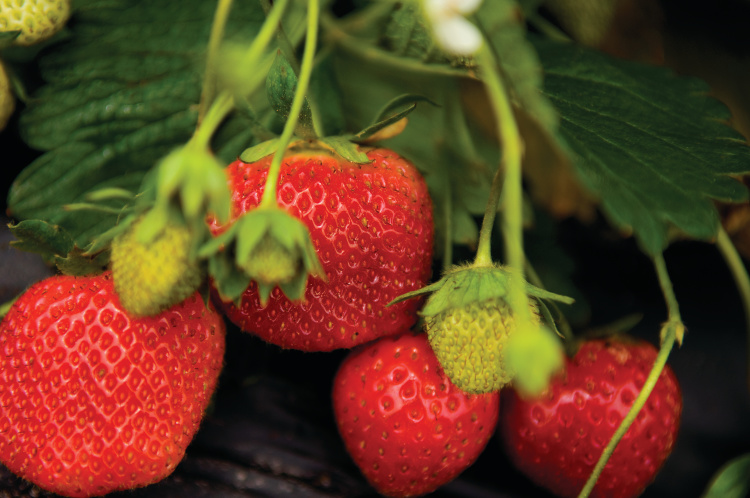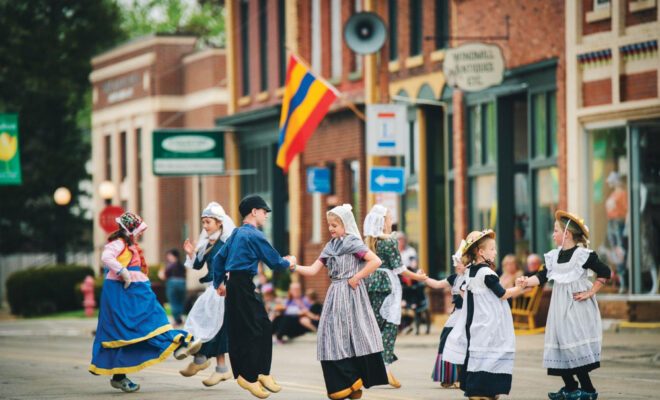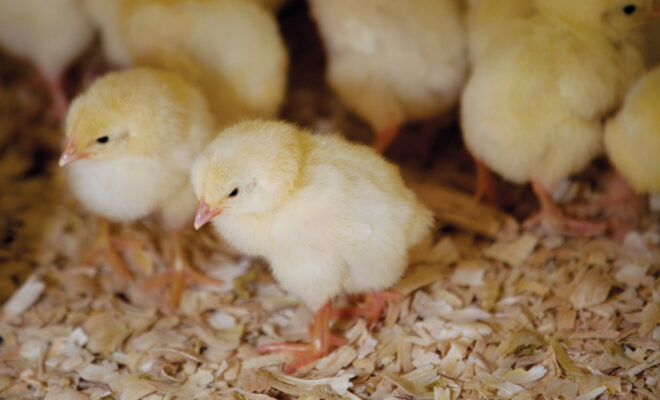
Remember when strawberries grew with red centers, juicy and packed with flavor? The best way to enjoy those strawberries again requires growing them yourself.
In Illinois, we plant strawberries in April, if weather and soil conditions allow. Choose a site receiving full sun for a minimum of six hours a day. Strawberries will grow in most soil conditions but like a lot of nutrients, so enhance the soil by digging in composted manure.
The shape of your bed makes a big difference when harvesting. Strawberries don’t get very tall, so you have to kneel along the row to harvest. You don’t want the row width deeper than you can easily reach to the center. Four feet works well as long as the space allows you to kneel on both sides of the row. The number of plants you purchase determines the length of the row. Plan on two staggered rows in a 4-foot-wide bed. Place the transplants 18 inches apart.
Order your transplants from a nursery. They ship them at the correct planting time. I would avoid picking up plants from a multipurpose store where they may have dried out on a shelf for months.
Strawberries come in two kinds – everbearing and June bearing. For the best taste and size of harvest, stick with the June bearers. All Star, Red Chief and Honeoye grow well in Illinois, but consider other varieties, too. Check with your University of Illinois Extension office for additional information.
Planting depth determines success or failure. The transplants arrive with a crown attached to bare roots. Spread the roots out and just cover with soil. The crown must be above the soil level. Too high and the roots dry out, too low and the crown rots, so take your time to get it right. Finally, water the new plants.
Now comes the hard part. Most growers recommend picking off all the blossoms this first year, not allowing any berry growth. This forces the plant to put all its energy into the development of roots and daughter plants for a really good harvest the following year. Personally, I’ve tried it both ways and prefer having two good harvests for the first two years instead of no harvest one year and a great harvest the second year.
In central Illinois, harvest usually happens the last two weeks of May into the first week of June, but you only get three weeks. Pick daily. Week one, you’ll have the big berries. Week two, they start decreasing in size. By week three, when you’ll likely tire of daily picking, the berries will be smaller and the end of the season quickly approaches.
Following harvest, mow down the bed, leaving an inch of leaves above the crown. Fertilize with a balanced fertilizer (10-10-10 or 12-12-12), and keep the plot weeded all summer while the runners stretch out and connect with the soil.
In the fall, cover with 4 to 5 inches of straw after several frosts, but before temperatures drop below 20 degrees.
See more: Visit Kern Family Orchard for Fresh Strawberries and More
Ask the Expert
Q: Is it too late to prune my lilac?
A: Actually, it is too early. You would be cutting off this spring’s flowers. Wait until right after the blooms fade, then remove no more than one-third of the plant.
Q: Is it possible to divide hostas without digging the whole plant?
A: Yes, use a bulb planter to slice off a section when it first emerges this spring.




